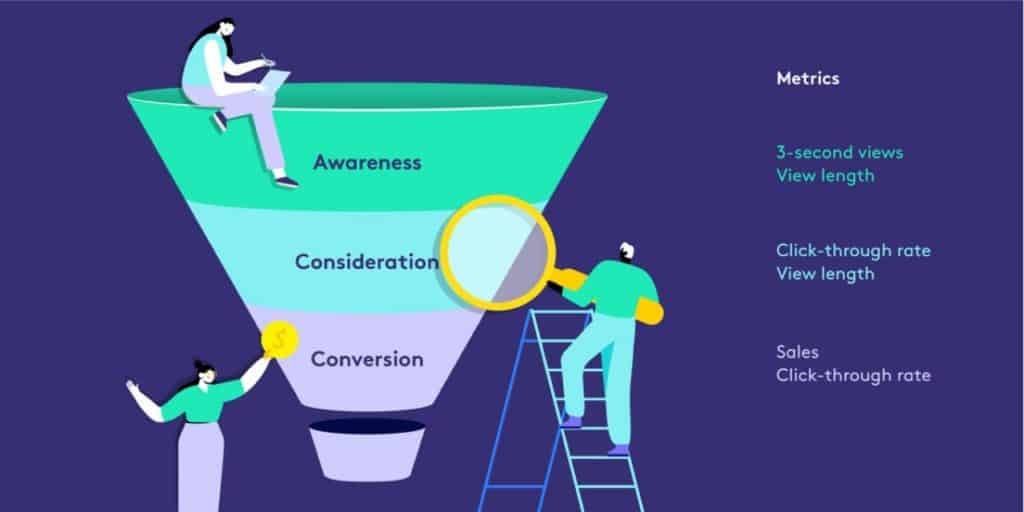
Marketing budgets: they’re a challenge to create, and almost impossible to sell.
At least, that’s what the general wisdom tells you. Much of it is based on truth—in the experience of CMOs, VPs of marketing, and other marketing department heads since time immemorial (or at least, since marketing departments were a thing).
But what if you could write a budget that your CFO would love?
It’s possible. You just have to start thinking like a CFO—budgeting your marketing dollars for the maximum, yet also realistic, impact.
Here’s our guide to creating a CFO-approved digital marketing budget.
What goes into a digital marketing budget?
First, let’s talk about what items should be in your digital marketing budget.
Digital marketing generally consists of the following strategies, depending on variables like your brand’s size, budget, goals, and audience. Think of these as the strategies available to you, rather than strategies you must use.
- Content marketing: Blog posts, webinars, long-form content, podcasts, image galleries—all this and more is what makes up your content marketing.
- Social media marketing: You need a robust presence on the social media platforms where your audience congregates, be that LinkedIn, Twitter, TikTok, etc.
- Paid advertising: Google ads, social ads, and display ads are your main options here, and all can be utilized strategically based on your goals.
- Email marketing: Consistent, high-quality emails can help ensure your brand stays top-of-mind for your existing customers, and help convert new ones.
You may have other line items, such as funds specifically directed toward marketing a product launch or hosting a virtual or in-person event. However, those would ideally be separated into a separate event-specific budget. Here, we’re talking about the strategies and tools in your general, everyday B2B tech marketing budget.

Important note: You may also have staffing and service items like agency contracts, freelancer costs, website maintenance, and updates, etc.
How to get started on your B2B marketing budget: numbers to keep in mind
If you’re unsure how much you should be spending, here are some general guidelines to follow.
According to the 2020 American Marketing Association’s CMO Survey, tech companies spend, on average, 22% of their company’s revenue on marketing.
When it comes to the broad B2B category, that number is much higher: 52% for B2B product companies and 46% for B2B services.
Of that, 50% is allocated just to social media marketing for B2B product companies, and 37% for B2B service companies.
Your percentage will likely fall somewhere in the middle. If you have big campaigns coming up in the year—a new product launch, or if you’re going into fundraising, or you’re announcing a merger or acquisition—naturally that percentage will be higher than in less eventful years.
Tips for budgeting like a CFO
- Start the budgeting process by looking at organizational goals.
Instead of digging right into the numbers, start the budgeting process by writing down the larger goals your department and the company as a whole are working toward.
The CFO will want to see how your marketing budget supports the larger direction of the company. So, if your company is branching into a new market next year, your department’s role will be to get the word out about your brand in that specific area. Your budget will therefore include geographically targeted marketing—social media ads, perhaps local influencer marketing, PR outreach to new outlets, and more.

Or perhaps your department is looking to increase the customer retention rate by 10%. To do this, you’re increasing your spend on retargeting ads, including a new item for a freelancer to spearhead customer testimonial development, and developing a new customer loyalty program.
When you start by writing down your big goals, you’re able to better see how and where the activities—and expenses—of your department fit into that picture. And importantly, so is your CFO.
- Make analytics a regular part of your ongoing evaluation.
Whether you’re trying to get your CFO’s sign-off on your marketing budget, or you’re simply trying to budget like one, analytics will be one of your most effective tools to determine which strategies are working, and which aren’t.
There’s no shortage of analytics information available. Even PR, the results of which are notoriously difficult to measure, now has plenty of analytics platforms to choose from, like Meltwater, Cision, and others.
This data can help you determine everything from the ROI for specific marketing activities to how many posts per week are optimal, to which types of ads are proving more effective—all of which affect your budget.
- Organize the budget by objectives, rather than by marketing activity.
If you need to present your budget to the CFO, consider organizing your budget not by marketing activity—social ads, content development, etc.—but instead by the business objective each activity is supporting.
You’ll still need to break out the line items, but laying out your budget this way will make it much easier for your CFO to understand.

By the same token, doing your budget in this way will give you a different perspective and way of understanding, as well. With business goals front and center, rather than functions or activities, it will be easier to see how everything connects.
This won’t be possible for every element of your budget, but it will work for certain things—campaigns and new market pushes, for example.
- Coordinate with other departments as needed.
Even though their goals and activities are closely related, marketing and sales departments rarely collaborate as much as they might. That goes for other departments, as well.
Getting input from the sales team or the customer service team will likely result in not only a more accurate picture of what’s needed, in terms of marketing activities, but also help you determine what’s working and what isn’t. It may also help generate ideas for new strategies that should be incorporated into the coming year’s marketing plan.
- Project results/ROI/revenue whenever possible
Marketing ROI can be difficult to project, which is why they’re rarely included in marketing budgets.
However, if you have the means of generally projecting your results, ROI, or revenue from a specific marketing activity or campaign, include that in the budget.

Good examples of items this could make sense for include:
- Running the same or similar registration ads for a monthly webinar or other recurring events
- For for the social media campaign leading up to your company’s annual conference
- A B2B influencer campaign with an influencer you’ve worked with closely before
Just as it’s helpful and clarifying for everyone (not just your CFO, but your marketing team, too) to include potential results whenever possible, it’s important to be upfront if you can’t project the ROI on a particular activity. If a particular strategy is brand-new to your company, or the product you’re marketing is brand-new to your audience, you’re in fairly uncharted waters.
- Observe, react, and adjust as necessary
Don’t get stuck in a certain way of doing things just because you (or your predecessor) did it that way last year, or for the last five years.
Take the time to analyze your marketing budget from last year. What worked well? What don’t you need anymore? What do you need to double down on?
Chances are your budget will need to go up, both because costs are rising and because certain platforms are becoming more competitive—but certain things, whether that’s digital PR or paid ads, will be more worth your investment based on the specific annual goals you’re trying to meet.
Budgeting your marketing dollars like a CFO requires strategic, goal-oriented thinking. The effort is significant, but you’ll see a payoff in both your executive team’s enthusiasm for your plan and in your own team’s understanding of how their work is supporting larger organizational goals.
Don’t have the time for this? Our Virtual CMO offering may be just what you need.

Leave a Reply